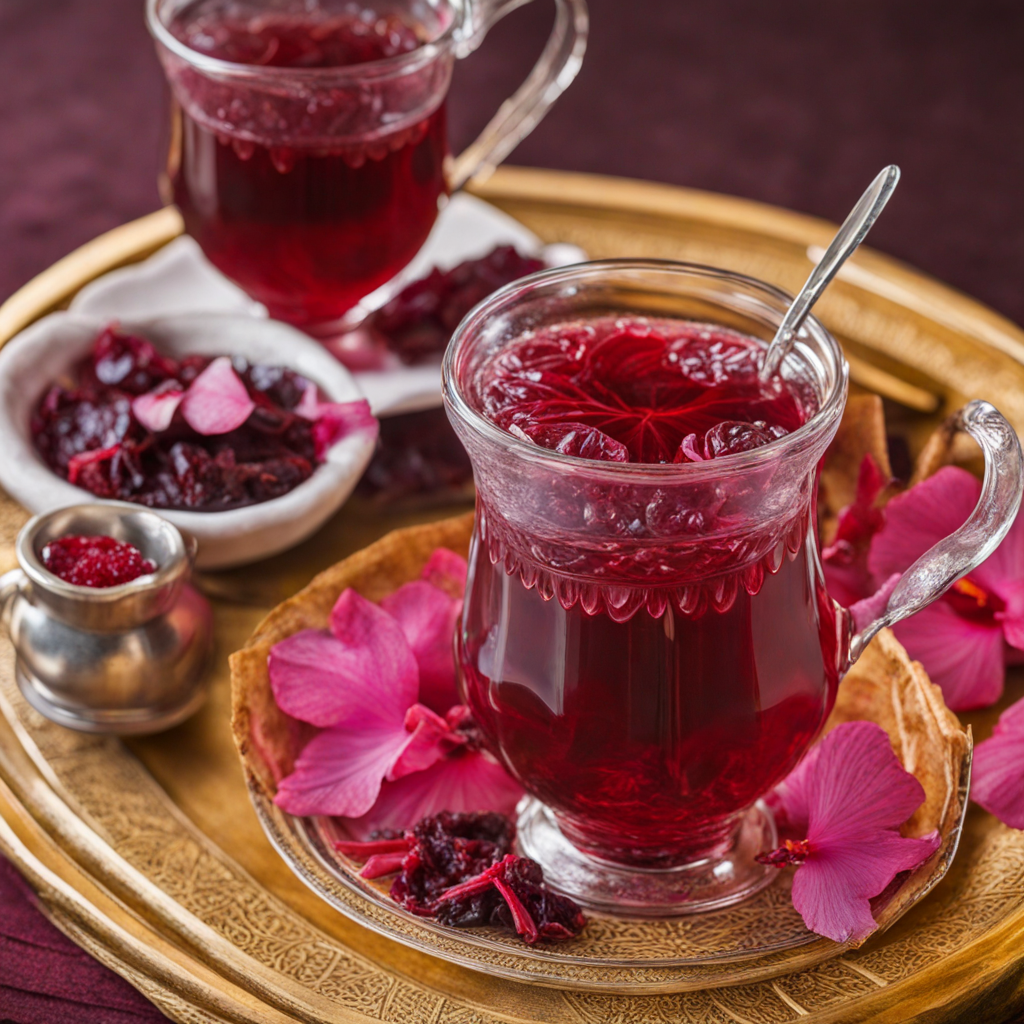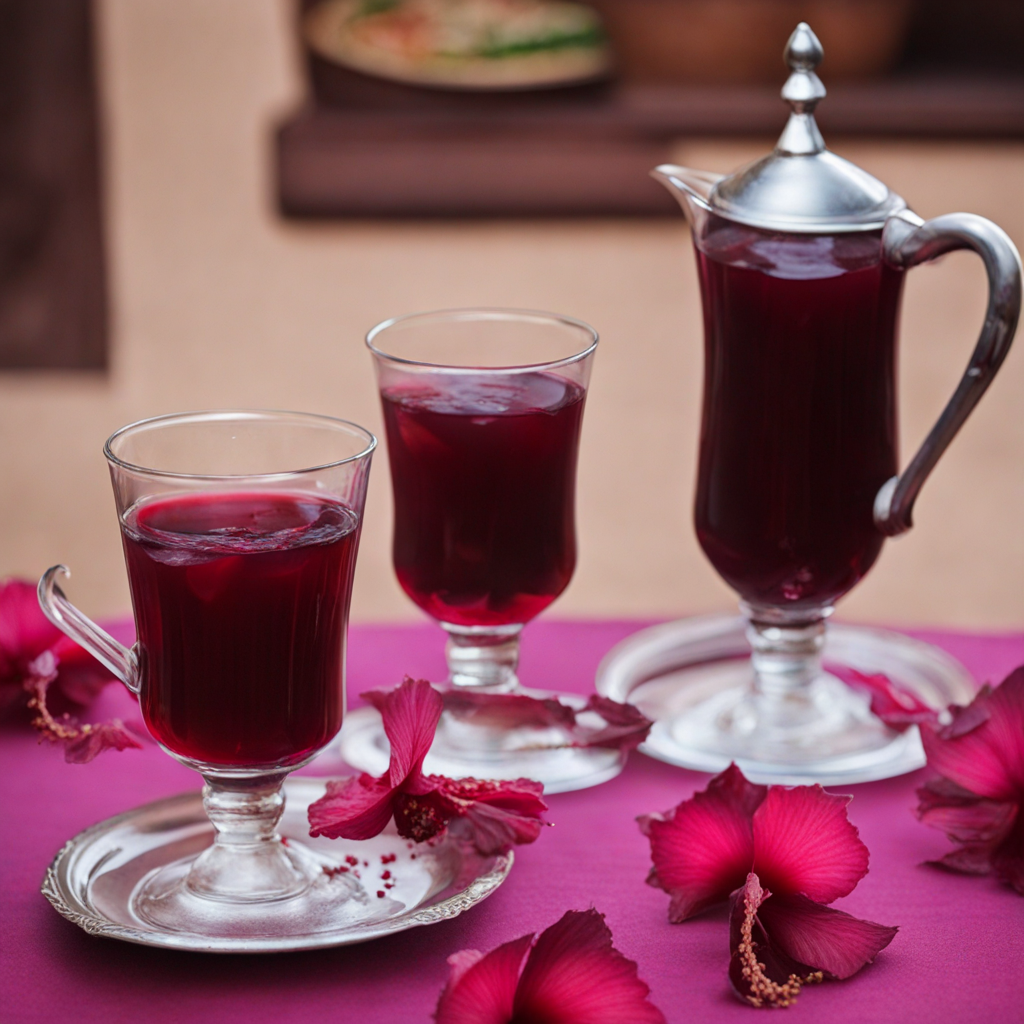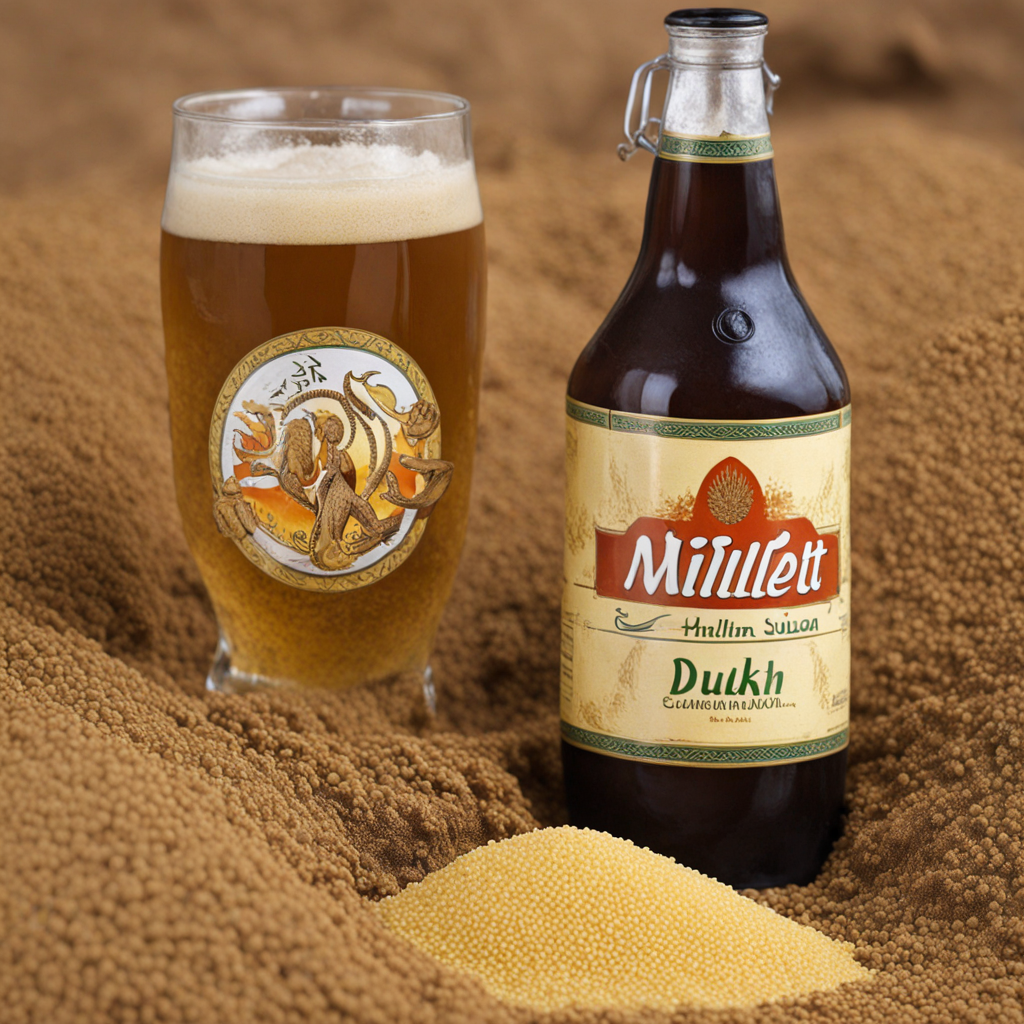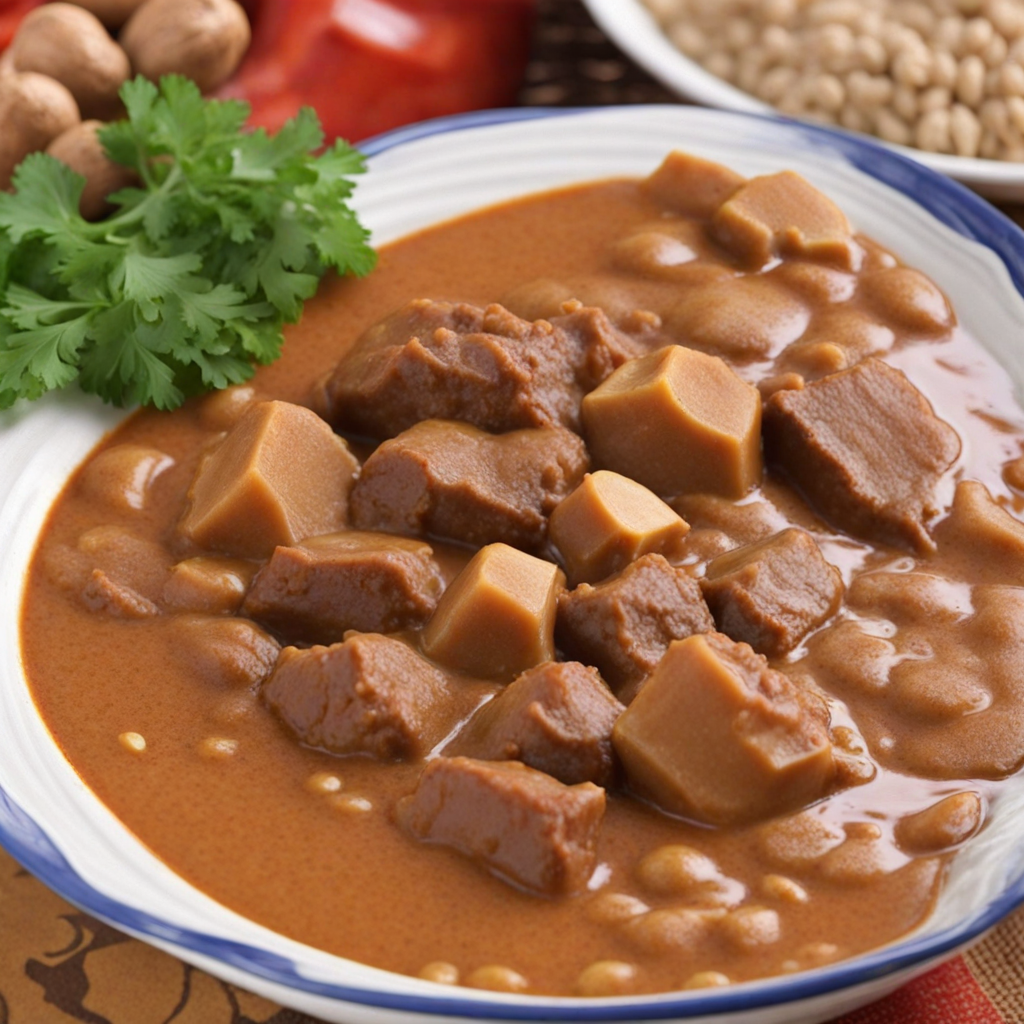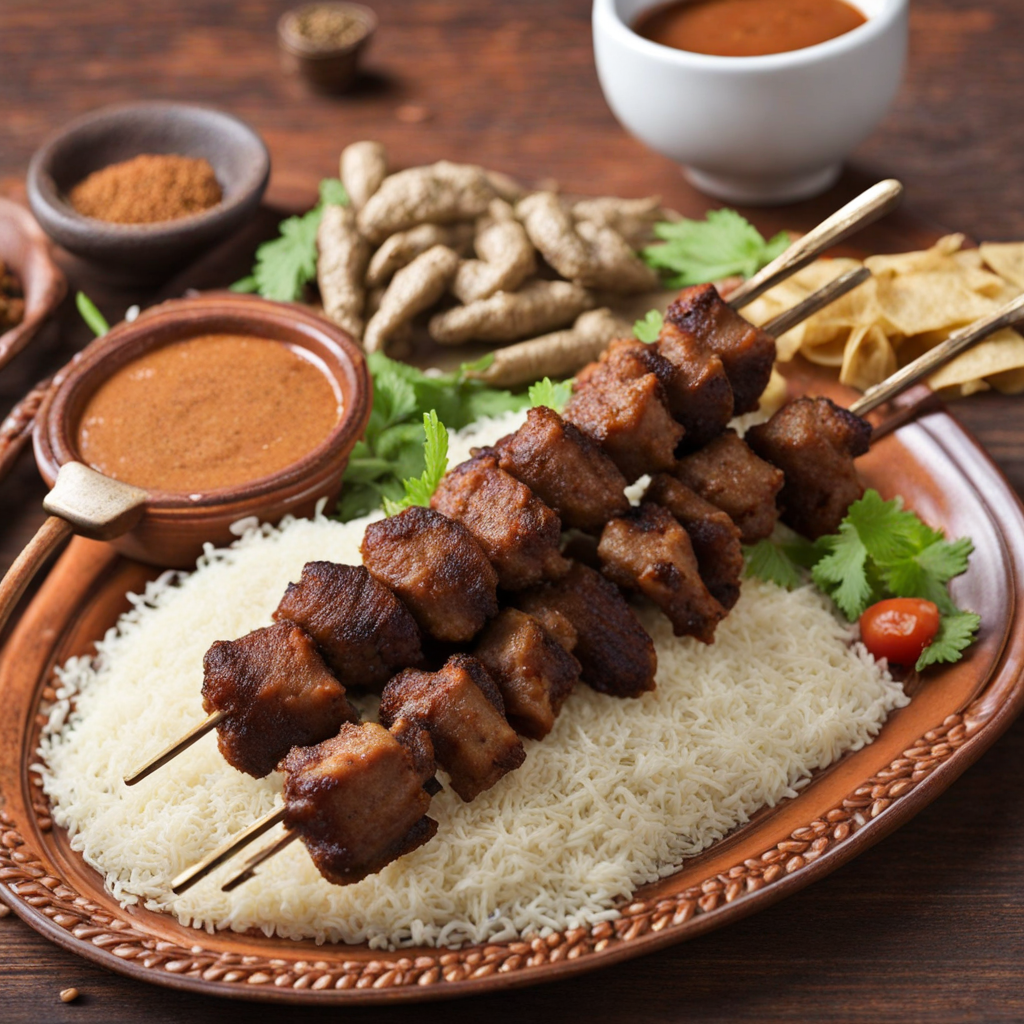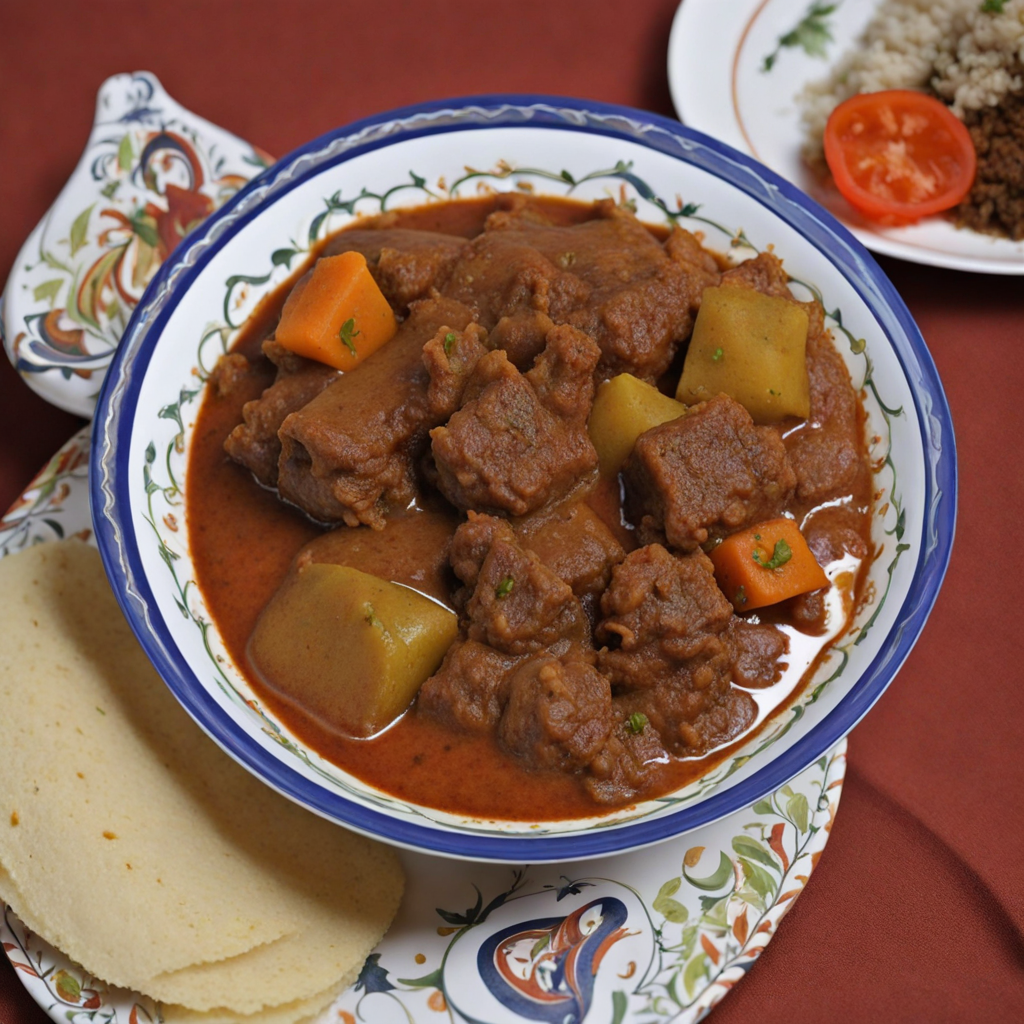Karkade
Karkade, a vibrant and refreshing beverage from Sudan, is made from the dried calyces of the hibiscus flower, known for its deep crimson color and tart flavor. This delightful drink is often enjoyed chilled, making it a perfect thirst-quencher in the hot Sudanese climate. The preparation involves steeping the dried hibiscus in boiling water, which brings out its rich, tangy notes, and then sweetening it to taste, typically with sugar or honey. The result is a beautifully aromatic infusion that is both visually stunning and invigorating. This beverage not only tantalizes the taste buds but also offers a unique sensory experience. With its floral aroma and a tantalizing balance of sweet and sour, Karkade captivates those who try it. It can be served plain or garnished with slices of lemon or mint leaves, enhancing its refreshing qualities. Additionally, Karkade is often enjoyed during social gatherings and celebrations, making it a staple in Sudanese culture, where sharing food and drink is a significant aspect of hospitality. Karkade also boasts numerous health benefits, making it an appealing choice for health-conscious drinkers. It is rich in antioxidants and vitamins, particularly vitamin C, and is known for its potential to help regulate blood pressure and promote digestion. Whether you sip it on a hot day or serve it during a festive occasion, Karkade offers a taste of Sudan that is both delicious and invigorating, inviting you to explore the rich culinary traditions of this vibrant country.
How It Became This Dish
The History of كركديه (Karkadeh) in Sudan: A Cultural and Culinary Journey Karkadeh, known in English as hibiscus tea, is a vibrant and refreshing beverage that holds a special place in the hearts and traditions of Sudanese culture. Its ruby-red hue and tart flavor are not only pleasing to the palate but also steeped in a rich historical narrative that reflects the social, economic, and cultural dynamics of the region. This exploration of karkadeh will delve into its origins, cultural significance, and development over the centuries, showcasing its role as more than just a drink but as a symbol of Sudanese identity. Origins of Karkadeh The origins of karkadeh trace back to the hibiscus plant, specifically *Hibiscus sabdariffa*, which is believed to be native to West Africa. Historically, the cultivation of hibiscus spread across Africa and into the Middle East, where it found particular favor in countries like Egypt and Sudan. In Sudan, karkadeh is not merely a beverage; it is deeply intertwined with the social fabric of the nation. The use of hibiscus for culinary and medicinal purposes can be traced back thousands of years. Ancient Egyptians brewed hibiscus tea, both for its refreshing taste and for its health benefits, using it as a remedy for various ailments. The plant's vibrant color and unique flavor made it a popular choice in various cultures, with each region adopting its own methods of preparation and consumption. In Sudan, however, karkadeh evolved into a significant cultural symbol. Cultural Significance Karkadeh holds a prominent place in Sudanese hospitality and social gatherings. It is commonly served during festive occasions, including weddings, religious celebrations, and family gatherings. The preparation of karkadeh often becomes a communal activity, bringing families and friends together in the process. The deep red color of the drink symbolizes joy and celebration, making it a fitting addition to any festive table. In Sudanese culture, the way karkadeh is served can vary significantly based on the occasion. It can be enjoyed either hot or cold, and the preparation might include the addition of sugar, mint, or even lemon juice, enhancing its flavor profile. This versatility allows karkadeh to cater to various tastes and preferences, making it a beloved beverage across different demographics. Moreover, karkadeh's role extends beyond mere refreshment; it is often associated with hospitality. Offering karkadeh to guests is a gesture of welcome and warmth, embodying the Sudanese ethos of generosity and community. This practice reflects broader cultural values where social bonds are nurtured over shared meals and drinks, reinforcing the importance of togetherness. The Development Over Time As trade routes expanded and cultural exchanges flourished, the spread of karkadeh beyond Sudan became inevitable. During the 19th and early 20th centuries, the movement of goods and people across borders facilitated the introduction of karkadeh to various parts of the Arab world and beyond. In Egypt, for instance, karkadeh developed a distinct identity, often consumed as a popular refreshment during the hot summer months. The drink became a symbol of Egyptian hospitality, mirroring its role in Sudan. In Sudan, the popularity of karkadeh has been sustained through the years, but it has also evolved in response to changing social dynamics. The globalization of food culture in the late 20th and early 21st centuries introduced karkadeh to a wider audience, with its health benefits being highlighted in various wellness circles. Research has pointed to the potential health advantages of hibiscus tea, including its ability to lower blood pressure, improve digestion, and provide antioxidants. This newfound recognition has led to increased interest among health-conscious consumers, further solidifying karkadeh's place in both traditional and modern diets. Economic Impact The cultivation of hibiscus for karkadeh has also had economic implications for many Sudanese farmers. The plant thrives in the warm climates of Sudan, making it an ideal crop for local agriculture. The production of karkadeh contributes to local economies, providing livelihoods for those involved in its cultivation, harvesting, and processing. As Sudan seeks to diversify its economy, karkadeh presents an opportunity for exports, with increasing global interest in herbal teas and natural beverages. Karkadeh Today: A Modern Perspective In contemporary Sudan, karkadeh remains a staple in both urban and rural areas. With the rise of cafes and restaurants that celebrate traditional Sudanese cuisine, karkadeh has found its way onto menus, often served alongside traditional dishes such as ful medames (stewed fava beans) and kisra (fermented flatbread). The drink's popularity continues to transcend generations, serving as a bridge between the past and present. Moreover, the global interest in herbal teas has led to the emergence of various products featuring hibiscus, ranging from bottled drinks to herbal blends. This trend has allowed karkadeh to reclaim its place on the international stage, promoting Sudanese culture and cuisine worldwide. Conclusion Karkadeh is much more than just a drink; it is a vibrant representation of Sudanese identity, culture, and community. Its origins in ancient Africa, coupled with its evolution through centuries of cultural exchange, paint a picture of a beverage that has grown to symbolize hospitality, celebration, and health. As karkadeh continues to thrive in Sudan and gain recognition beyond its borders, it stands as a testament to the enduring legacy of traditional foods that connect us to our heritage and to each other. Whether sipped in the comforting embrace of home or served at a bustling café, karkadeh remains a cherished part of Sudanese life, inviting all to partake in its rich history and unique flavor.
You may like
Discover local flavors from Sudan


